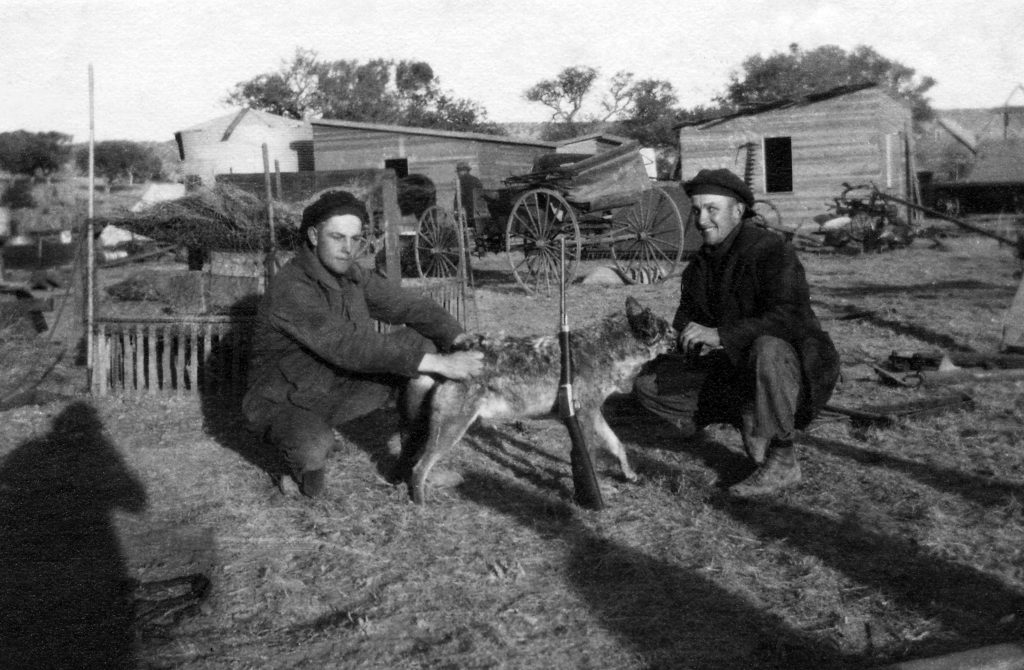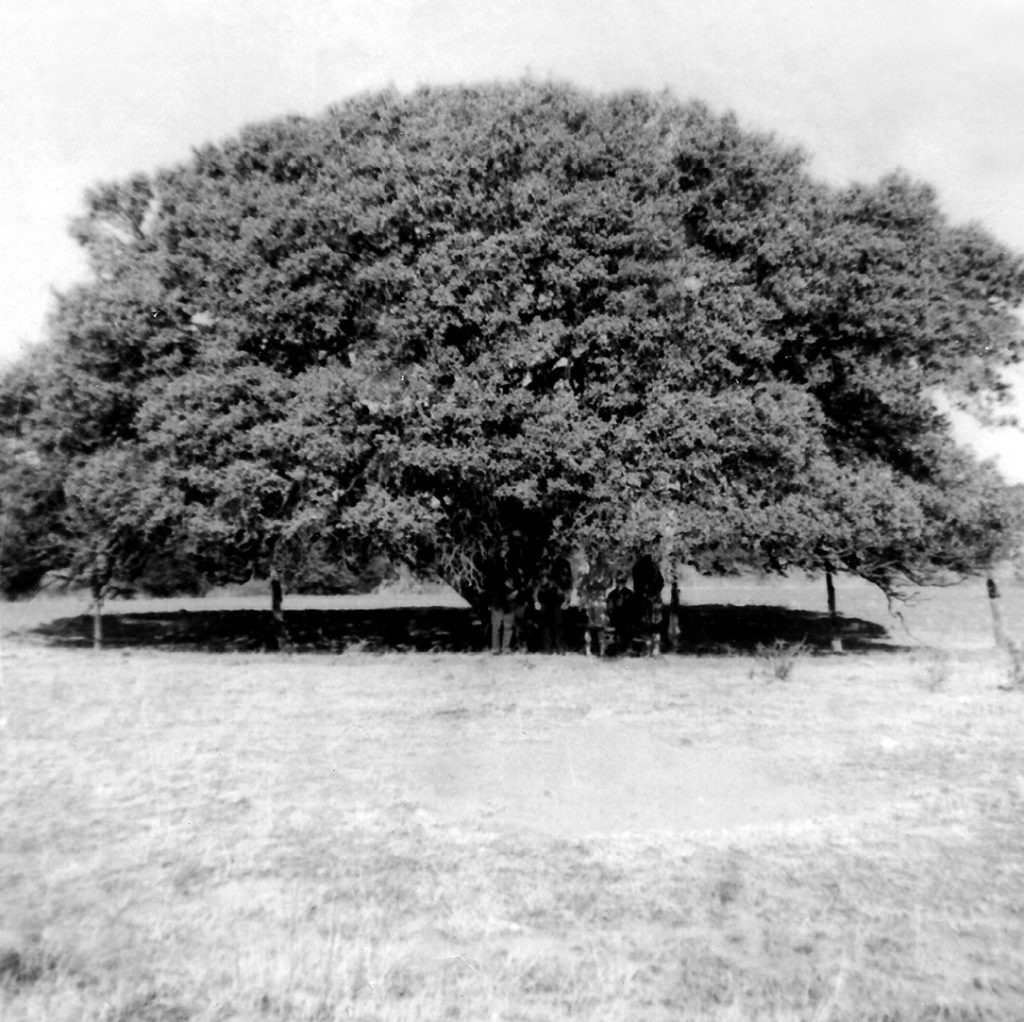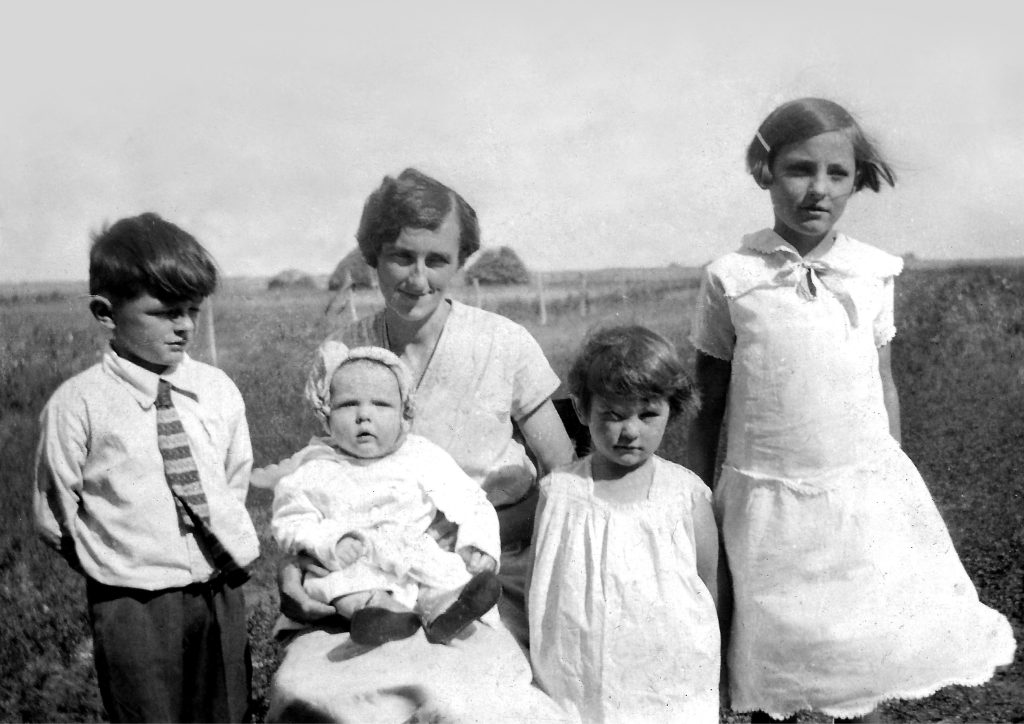
Moving to Mexico: A Family Story
Grace Dalke
Isaac A. Friesen and Helena Wiebe were married on October 8, 1922. Three weeks later they moved to Mexico, together with Helena’s parents, David K. and Helena Wiebe. Isaac’s father, Abram Friesen, was a minister and farmer, born on March 24, 1863, on the southern steppe of the Russian empire (present-day Ukraine). He arrived in Quebec City on the SS Moravian with his parents on July 1, 1875. They initially settled in the village of Rosenfeld, in Manitoba’s West Reserve (section SE 31-2-1W). He was one of six surviving children out of the twelve born to Isbrand and Maria (DeVehr) Friesen. Abram Friesen was baptized on June 2, 1884.
Isaac’s mother, Maria Schroeder, was born on October 21, 1866. She arrived in Quebec City with her parents, Johann J. and Maria Schroeder, on the SS Nova Scotian in October 1874. They initially settled in the East Reserve. The Schroeders later homesteaded in Schoenhorst, east of Gretna, Manitoba. Her father, Johann, died before his land deed was granted. Her mother, Maria, with help from the church leaders, was named on the deed. This piece of land is where Johann Schroeder was buried.
Isaac’s parents, Abram and Maria (Schroeder) Friesen, lived in the Rosenheim area. Their marriage produced twelve children, five of whom died as infants. Abram Friesen was elected to the ministry at Grossweide on February 26, 1908, and ordained on March 15 by Bishop Abraham Doerksen of the Sommerfeld Mennonite Church. Two of his brothers, Isaak and Wilhelm, also became ministers. During his time as a minister he delivered 1,578 sermons, and served at 523 funerals, 314 weddings, and many golden and silver anniversaries. Maria Friesen died March 5, 1933. Abram Friesen then married the widow of his brother Jacob, Katherina (Funk) Friesen. Rev. Abram Friesen died on August 29, 1942. Abram and Maria Friesen are buried in the Rosenheim Cemetery west of Rosenfeld, next to the land they farmed.
Helena’s father, David K. Wiebe, also came from the Russian empire (present-day Ukraine) with his parents David and Katharina (Klassen) Wiebe on the SS Moravian, landing in Quebec City on July 1, 1875. He was two years old at the time. Several Wiebe and Klassen family members immigrated with them. The women and children stayed in the immigration housing provided at Fort Dufferin, Manitoba, near Emerson, while the men went to look for the land on which they would settle. The Wiebes and Klassens homesteaded in what would become the village of Roseville (the original Rosenfeld), in the West Reserve (NE-31-2-1W). In 1880, David K. Wiebe’s father, David Wiebe Sr., had forty-five acres of cultivated land, making him the second-largest farmer in the area. In 1880 he produced 340 bushels of wheat, 100 of barley, and 350 of oats.1 David Wiebe Sr. was married to Katharina Klassen, who was a daughter of the family that fostered him after his own parents died. After she passed away in 1914, he married Katharina (Rempel) Sawatzky, who died in 1918.
Helena’s mother was Helena Siemens. Her parents were Erdman and Helena Siemens. They came to Canada on July 6, 1875, on the SS Sarmatian. Helena Siemens was born five years later on March 9, 1880, in Weidenfeld, Manitoba. The elder Siemens couple are both buried in Weidenfeld, on section NE 25-2-2W.
David K. Wiebe and Helena Siemens were married on January 3, 1901. They moved to their own farm, south of present-day Rosenfeld. They were successful farmers, providing well for their family of five boys and four girls. The daughters dressed in the fashion of the times, with lace, ribbons, jewelry, and pointed, bowed shoes. The family bought new machinery and was among the first in the area to own a car. This car was used to take the female students, including daughter Helena (later married to I. A. Friesen), to Rosenfeld on a school outing.
Isaac A. Friesen was born in Rosenheim, on March 27, 1901. Helena Wiebe was born later that same year on December 21, in the Rosenfeld area. Isaac Friesen and Helena Wiebe were married on October 8, 1922. Rev. David Stoesz officiated. Helena wore a rust-coloured dress with an ivory lace inset for the ceremony. It was customary in the Sommerfeld church at that time for brides to wear dark colors. She changed into a white dress for the reception and dance on her parents’ farmyard. They had fiddlers who provided the music. Helena spent the night at her parents’ place in order to help clean up the following day.

Helena and Isaac were the first of her family to be married. Three weeks after their wedding they packed up their belongings and made the decision to move to Mexico with the entire David K. Wiebe family. It was her father who persuaded Isaac and Helena to relocate after hearing accounts of what was available in Mexico from others who had gone to scout the land. Several of Helena’s aunts and uncles also moved at this time. Her grandfather David Wiebe Sr. went with them as well, as did many of his siblings. David Wiebe Sr. was seventy-eight years old and had been widowed twice at the time of their departure. Likely David K. Wiebe wanted to keep his family together and therefore promised to help get the newlyweds set up in Mexico. The Friesen family, on the other hand, wanted them to remain in Manitoba.
The Wiebes were progressive in their farming practices and lifestyle. Therefore, it is curious that they decided to move to Mexico. Was it based solely on land availability for their sons who would soon be marrying and needing farms of their own? Did it have to do with the fact that many of their neighbours and extended family members, and those in church leadership, were immigrating? Perhaps a combination of the two? Questions that should have been asked now go unanswered.
The group immigrating to Mexico travelled by train, leaving Gretna on November 1, 1922. The train comprised of thirty freight and three passenger cars. The trip took ten days, taking them to a station near Cuauhtémoc, approximately three hundred miles inside the Mexican border. The last leg of their journey took them forty-five miles north and was made by buggies and wagons pulled by horses; the people were in the buggies and their possessions filled the wagons.2 Before they arrived at their destination, they were robbed by a group of bandits, who went through their belongings. Among the things taken were Isaac’s accordion and Helena’s white wedding dress.
The group sheltered under the “Siemens tree,” which was near their destination in what became the village of Halbstadt, Campo 55, in the Santa Clara Colony. The tree was an old white oak that was reported to be sixty-six feet in diameter. During the first few weeks the family experienced three deaths. A nephew and an uncle of David K. Wiebe died within days of each other. His father, David Wiebe Sr., also passed away two weeks after arriving at their destination. Life was difficult as they lived in tents for two months until permanent housing was built nearby.

During their stay in Mexico, Isaac farmed with his in-laws. Farming in Mexico proved to be very different from farming in Manitoba. They had to adjust to the weather conditions and lack of adequate water sources. They started building their lives all over again by constructing houses out of wood, making shelters for the animals, and eventually setting up schools and churches. The land they farmed came with a two dollars per acre down payment requirement. Two daughters were born to Isaac and Helena: Katharina in 1923, and Maria in 1925.
Isaac’s father, Rev. Abram Friesen, from Rosenheim, Manitoba, travelled to visit them in the fall of 1923. He probably also planned to check up on some of his former congregants while he was there. He toured the area and took note of how agriculture was carried out in this new land. There was a delegation from Manitoba that was sent out around this same time, which included Sommerfeld ministers. It is unknown if Rev. Friesen was a part of this group, but in all of his photos there are other men pictured with him.3 The bishop who had ordained him, Rev. Abraham Doerksen, also moved to and helped found Santa Clara in 1922.
The land was not what Isaac and Helena expected and they were unhappy with the decision they had made. David Stoesz, the minister who had married them, who moved to Mexico at the same time they had, moved back to Canada only one year after arriving.4 Isaac and Helena remained in Mexico until May 14, 1925, when they, too, decided to leave, passing through El Paso, Texas, en route back to Manitoba by train.5
Once back in Manitoba, Isaac and Helena moved in with Isaac’s family. They lived in Rosenheim together with Rev. Abram and Maria Friesen, Isaac’s sister and her family, and Isaac’s single brother Diedrich. Their youngest daughter, Maria, passed away while they were living there, just before her first birthday. Later that year Isaac and Helena had a son, David. In 1927, they were able to move out on their own and rent land in the Melba School District. In 1928 they moved onto a farmyard in the Reichenbach School District where they would raise all of their eight children. Helena, Abram, Henry, and Esther were born on this yard. The doctor didn’t make it to the farm in time to deliver Esther, so Isaac had to assist in her birth. The last two children, Edward Glen and John Dwight, were born in the Bethel Hospital in Winkler. During her first hospital experience, Helena was concerned that they would mix up the babies and give her the wrong child to take home.

Isaac and Helena bought land but also rented from landowners in Winnipeg, including Mr. J. V. Long. Starting farming in the depression years of the 1930s was a struggle. Low crop yields coupled with poor grain prices made farm life challenging. Isaac and Helena had some good crop years but they also had many years when flood waters made life difficult. Isaac’s land was prone to both spring and fall flooding when the rains were heavy. During one flood, as the water rose, they had to move their livestock to a neighbour’s barn down the road.
The Friesen family attended the Schoenthal Church north of Altona. The buggy wasn’t large enough for the entire family, so the children took turns going with their parents. If the weather was bad they would hold their own services at home, with scripture reading and singing out of the Gesangbuch. As the children moved into their teen years most of them became involved in the Rosenfeld Bergthaler Church, both in the choir and in the youth group.
Isaac’s crops consisted of wheat, oats, barley, and sugar beets. His children spent many hours helping, driving tractor, hoeing and topping beets, and preparing and bringing food out to the men who were threshing. To supplement the crop income Helena raised turkeys and chickens. The eggs were sold in Rosenfeld. Their landlords frequently placed orders for turkeys as well as produce from the garden. One year the turkey chicks had lice and needed to be bathed in turpentine to be deloused.
The Friesen children all attended the Reichenbach School. They walked the two miles when the weather permitted, meeting up with the other children in the neighbourhood. Helena made sure her children had a lunch, often with cookies baked earlier in the morning. When the annual school picnic took place, she brought an iced cake with strawberries for her family. Isaac served on the school board for a number of years.

(PRIVATE COLLECTION)
Helena was a wonderful seamstress and frequently sewed clothing for her children from clothes given to her. It was very important to her that her children wear something “new” for their Christmas programs at school. If it couldn’t be an outfit, it was a hair ribbon or a piece of jewelry for her daughters.
Both Helena and Isaac were hard workers. Most falls they would harvest thirty grain sacks of potatoes that they moved into storage for the winter. Isaac would also purchase a hundred pounds of fish, which Helena canned. They had their own sources for pork, beef, and chicken, as well as vegetables from their garden. There was an ice cellar near the pond where fresh milk and cream were kept. Almost as important to Helena as growing a vegetable garden were her flowers. She loved beauty and loved to make bouquets for visitors to take home with them. She continued to grow flowers into her nineties.
When Helena and Isaac left Mexico they knew it would be a long time until they saw Helena’s extended family again. In 1935 her sister Tina and husband Cornie Sawatzky moved back to Manitoba. Their young family stayed with Isaac and Helena briefly until they could settle on their own. They eventually purchased land in the MacGregor area.
In 1947, for their twenty-fifth wedding anniversary, Helena and Isaac travelled back to Mexico with their oldest daughter Teenie and her husband, Bill Funk. They also took their youngest son, Johnny, who was three years old at the time. Helena had not seen her parents or most of her siblings during those twenty-five years. After Isaac passed away in 1968, Helena made another trip to Mexico with her cousins. By this time both of her parents had passed away. During these years of separation they kept in touch, sending letters and pictures. There was a time, though, when Helena could not afford the three cents needed for a stamp. Helena’s parents, David K. and Helena Wiebe, never returned to Canada. They died in Halbstadt: David on January 6, 1948, and Helena on May 23, 1965, and are buried in the Halbstadt Sommerfeld Cemetery. They did not get to know their Manitoba grandchildren.
The farmyard north and west of Rosenfeld was home for Isaac and Helena until health issues dictated retirement and a move into the village of Rosenfeld in 1962. They held a farm auction, having sold their land to a neighbour. This was a difficult day, but they settled into town life. Their home was always open to family, friends, and neighbours, where there was never a shortage of baked goods. Isaac enjoyed going for coffee when he went to pick up the mail. Helena continued to sew and grow a big garden with many flowers. Their home was filled with much activity and laughter, as children and grandchildren visited regularly.
On May 8, 1968, Isaac passed away very suddenly. Helena spent that summer in her home with grandchildren keeping her company. In the fall she moved into Winkler, staying with her daughter Helen and her family. She lived there until she moved into the Ebenezer Units in Altona, where she resided for approximately twenty-five years. During those years she continued to entertain, play the piano, grow flowers, crochet, and attend church. She passed away in 1995 after a short stay in the hospital. She is buried in the Rosenfeld Cemetery next to her husband. Both funerals were conducted in the Altona Sommerfeld Church.
- John Dyck and William Harms, eds., 1880 Village Census of the Mennonite West Reserve (Winnipeg: Manitoba Mennonite Historical Society, 1998), 109. ↩︎
- John Dyck, The Lineage of Gerhard Wiebe and Anna Redekopp, 1806–2005: “Our Heritage” (2005), 222, 297. ↩︎
- Mennonite Heritage Archives (MHA), Winnipeg, MB, Cornelius Krause fonds, items 47.0ff. ↩︎
- MHA, David Stoesz Family fonds. ↩︎
- Manifest, US Department of Labor, Immigration Service, May 1925. ↩︎
